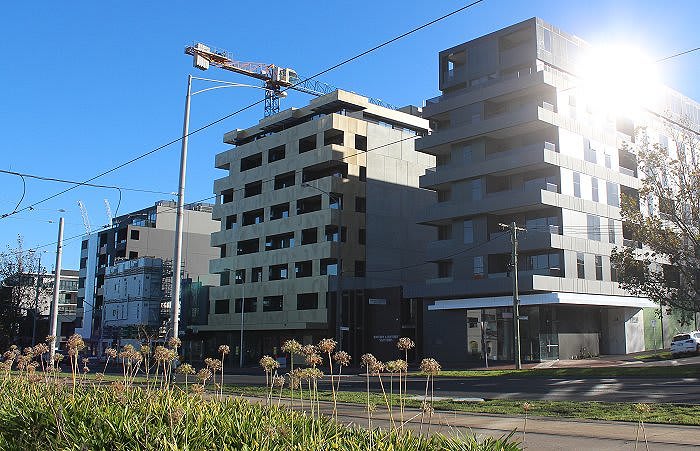Urbis quantifies the apartment shift to Melbourne's middle and outer suburbs
Property consultants Urbis in their latest Melbourne Apartment Essentials report have provided hard data affirming what many at the coal face of Melbourne's apartment industry have known for some time; apartments have well and truly established themselves in Melbourne middle and outer ring suburbs.
What wasn't known was the degree to which apartment living has taken root in traditionally detached housing areas.
According to Urbis, the March 2017 quarter saw for the first time apartment sales outside the inner city outweigh the more established inner city zone. That is, 58% of apartment sales were registered outside the inner city; a first since Urbis began the Melbourne Apartment Essentials series.
Apartment living is no longer just for CBD dwellers, and precincts like the Inner North, which captured 43% of total inner Melbourne sales, are well set up for apartment living. They provide residents with easy access to transport and neighbourhood character, as well as an affordable entry-point to the market.
Moonee Ponds, Heidelberg and Footscray are all markets that we have seen emerge over the past few years.
Mark Dawson, Director of Property Economics and Research, Urbis
According to Dawson, the increase in apartment activity in middle and outer suburbs can be attributed to destination amenity coupled with infrastructure investment. Add a tightening market for suitable inner city development sites, and the trend of apartments pushing further away from Melbourne's core is expected to continue.
Urbis also cites the shift in buyer preferences as being attributable to push and pull factors. Push factors include a mutually reinforcing market push that nudges purchasers and developers beyond their feasibility thresholds to explore new areas. At the same time, Urbis asserts that pull factors revolve around city-wide urban renewal points such as Sunshine and Monash.
Boosts to transport, planning, and investment around National Employment and Innovation Clusters will invariably pull new residents into these designated development zones.
Yesterday CBRE announced that M-City in Clayton, an example of a residential project located well beyond the inner city and within a National Employment and Innovation Cluster, had delivered 172 sales over two weekends. The first phase of M-City to go on sale had 175 units in total.
Melbourne Apartment Essentials recorded almost 500 sales from 47 projects in the March 2017 quarter.
Four new projects amounting to 1,471 units launched, whereas the equivalent period last year witnessed 14 developments at 2,878 launch to market. The scaling back of apartment releases is in line with market sentiment, with developers taking a more cautious approach to project releases.
We expect to see fewer project launches which will ensure the market maintains a healthy balance of supply and demand. Of the projects we monitor, 82% of stock has been sold.
At this stage of the market it is not about a large reduction in sales or drop in price, but a change in the type of sales we are seeing and where apartments are selling. After a more subdued quarter in inner Melbourne, we maintain our expectation of a boost in activity prior to the 1 July stamp duty changes.
Mark Dawson, Director of Property Economics and Research, Urbis
Melbourne Apartment Essentials Q1 2017 snapshot
The Melbourne Apartment Essentials report found:
- Urbis recorded just under 500 off the plan sales in the March 2017 quarter. Of these, 42% were in the Inner Melbourne area, while 58% were recorded in Melbourne’s middle ring.
- For the first time since reporting commenced, the majority of inner Melbourne sales were outside of the Central Precinct. The Inner North recorded the most sales (85 sales), followed by the Inner East (53 sales), Central (40 sales), Inner West (17 sales) and Inner South (1 sale).
- The weighted average sales price for the March 2017 quarter was $706,391, a $44,476 increase compared to the December 2016 quarter. This increase was driven by the volume of two-bedroom product selling.
- Two-bedroom, two-bathroom product was the most popular, accounting for 35% of total sales, an increase from 29% in the previous quarter.
- One-bedroom, one-bathroom, one-car product accounted for 18% of total sales.
- Four new projects launched amounting to 1,471 units this quarter, compared to seven projects amounting to 3,741 units at the end of the June 2016 quarter. Launches have decreased as the market self-regulates, although we have been expecting to see a short term rebound to beat the stamp duty changes on 1 July.
